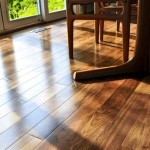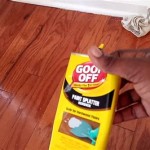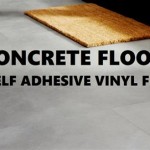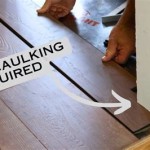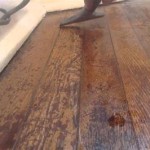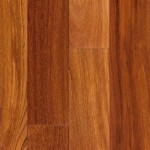How to Remove Adhesive Glue From Wood Floors
Adhesive glue can be a tricky substance to remove, especially from wood floors. It can leave behind stubborn residue that makes it difficult to refinish or re-stain the floor. However, with the right tools and techniques, you can effectively remove adhesive glue from wood floors without damaging the surface. This article will guide you through the process step-by-step, providing you with actionable tips and tricks.
1. Identify the Type of Glue
The first step is to identify the type of glue you are dealing with. This will determine the best method for removal. Some common types of adhesives include:
- Contact cement: This glue is strong and difficult to remove. It is often used for laminates and other materials.
- Epoxy: Epoxy glue is also very strong and can be challenging to remove. It is commonly used for bonding wood and other materials.
- Hot melt glue: This glue is less strong and can be softened with heat. It is often used for crafts and repairs.
- Water-based glue: This glue is typically weaker and easier to remove with water or a solvent.
Once you know the type of glue, you can choose the appropriate method for removal.
2. Prepare the Area
Before you start removing the glue, it is important to prepare the area. First, ensure adequate ventilation, as some glue removers can release fumes. Next, protect yourself by wearing gloves, eye protection, and a mask. Clean the area surrounding the glue residue to prevent spreading the adhesive to other surfaces.
For larger areas, you might want to consider masking off the surrounding wood using painter's tape. This will prevent accidental damage to the wood floor and allow you to focus on the areas requiring glue removal.
3. Choose the Appropriate Remover
The best glue remover will depend on the type of adhesive you are dealing with. Here are some options:
- Acetone: This is a strong solvent that can be effective at removing various adhesives, including contact cement and epoxy.
- Mineral spirits: This solvent is less harsh than acetone and is a good option for removing water-based glues and some types of contact cement.
- Glue remover: There are commercially available glue removers designed specifically for different types of adhesives. Be sure to choose a remover that is safe for use on wood floors.
- Heat: Hot melt glue can often be softened with heat, allowing you to scrape it off with a putty knife or a plastic scraper.
- Chemical Strippers: Chemical strippers are available for removing specific types of adhesive. These strippers are generally used for tougher adhesives and can be very effective but need to be used with caution as they are generally harsher on surfaces.
4. Test the Remover
Before applying any remover to the entire area, it is essential to test it in an inconspicuous spot. This will ensure that the remover does not damage the wood floor. Apply a small amount of remover to the test area and let it sit for a few minutes. If the wood appears to be discolored or damaged, choose a different remover or try a gentler approach.
5. Apply the Remover
Once you have chosen the appropriate remover and tested it, you can apply it to the glue residue. Apply the remover liberally to the glue and allow it to sit for the recommended time. The time required will vary depending on the remover and the type of glue. Refer to the product instructions.
6. Remove the Glue
After the remover has had sufficient time to work, you can begin removing the glue. If the glue is softened, you can use a scraper or a putty knife to remove it. For stubborn residue, you may need to use a wire brush or a sanding block. Be sure to work gently to avoid damaging the wood floor.
7. Clean the Area
Once you have removed the glue, clean the area with a damp cloth to remove any remaining remover or glue residue. It is crucial to remove all traces of the remover, as it can cause discoloration if left on the wood. Allow the area to dry completely before applying any finish or coating.
If the glue is still present or resistant to the initial removers, you may need to repeat the process with a different remover or try a different method. For instance, using a heat gun on low heat can be helpful for softening some adhesives. However, always exercise caution to avoid scorching the wood floor.
Remember, patience and precision are key to successfully removing adhesive glue from wood floors. Every project may require a different approach depending on the specific type of adhesive and the condition of the wood floor. Follow these steps carefully, and you will be able to get your wood floor looking its best again.

Removing Glue Or Adhesive From Hardwood Floors The Speckled Goat

How To Remove Glue From Wood Floors Pete S

4 Ways To Remove Adhesive From A Hardwood Floor Wikihow

Flooring How Can I Remove Carpet Adhesive From Hardwood Floors Home Improvement Stack Exchange

4 Ways To Remove Adhesive From A Hardwood Floor Wikihow

4 Ways To Remove Adhesive From A Hardwood Floor Wikihow

4 Ways To Remove Adhesive From A Hardwood Floor Wikihow

Removing Glue And Adhesive From Hardwood Floors Hometalk

How To Remove Glue From Wood Floors Pete S

Removing Parquet Flooring Floor Adhesive Lessons Learned Life After 40
See Also
